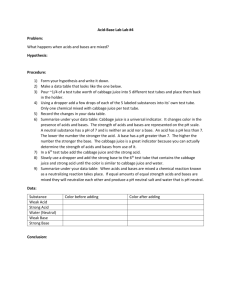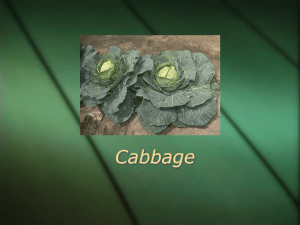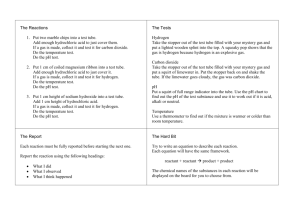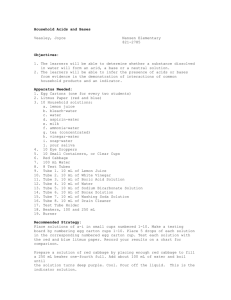Trading Places - New Haven Science
advertisement
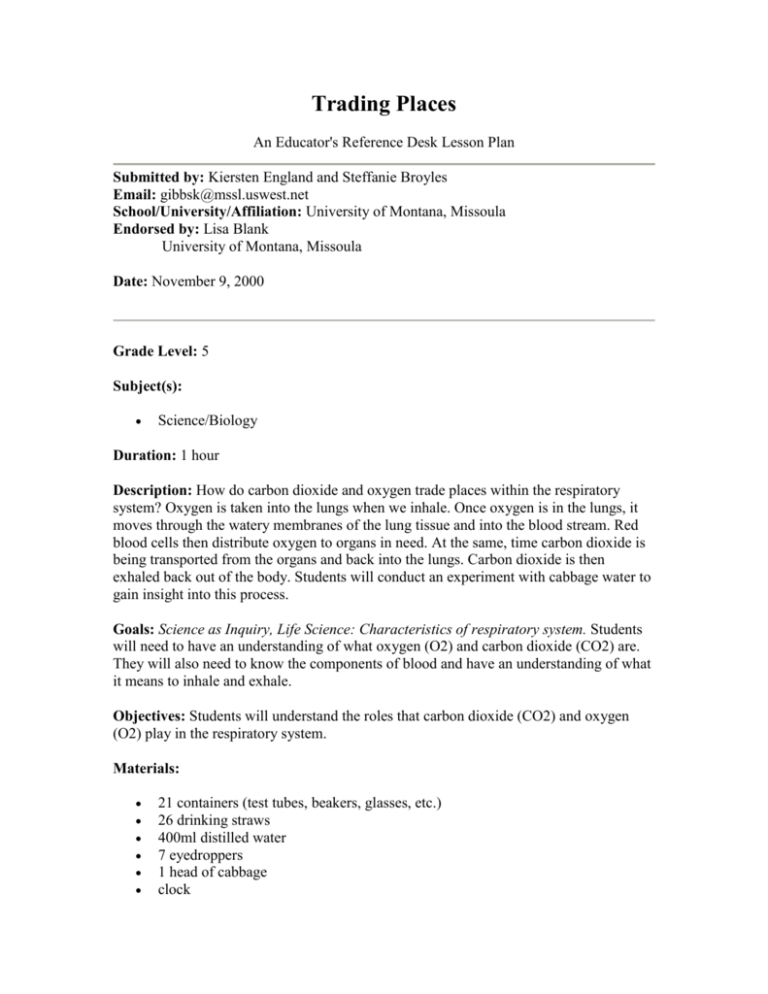
Trading Places An Educator's Reference Desk Lesson Plan Submitted by: Kiersten England and Steffanie Broyles Email: gibbsk@mssl.uswest.net School/University/Affiliation: University of Montana, Missoula Endorsed by: Lisa Blank University of Montana, Missoula Date: November 9, 2000 Grade Level: 5 Subject(s): Science/Biology Duration: 1 hour Description: How do carbon dioxide and oxygen trade places within the respiratory system? Oxygen is taken into the lungs when we inhale. Once oxygen is in the lungs, it moves through the watery membranes of the lung tissue and into the blood stream. Red blood cells then distribute oxygen to organs in need. At the same, time carbon dioxide is being transported from the organs and back into the lungs. Carbon dioxide is then exhaled back out of the body. Students will conduct an experiment with cabbage water to gain insight into this process. Goals: Science as Inquiry, Life Science: Characteristics of respiratory system. Students will need to have an understanding of what oxygen (O2) and carbon dioxide (CO2) are. They will also need to know the components of blood and have an understanding of what it means to inhale and exhale. Objectives: Students will understand the roles that carbon dioxide (CO2) and oxygen (O2) play in the respiratory system. Materials: 21 containers (test tubes, beakers, glasses, etc.) 26 drinking straws 400ml distilled water 7 eyedroppers 1 head of cabbage clock 7 test tube racks (if necessary) masking tape Lab worksheet Vocabulary: 1. carbon dioxide (CO2) - A gaseous waste product that is expelled from your body when you breathe. 2. oxygen (O2) - A gas that is essential for survival. It is inhaled when we breathe. 3. inhale - To breathe in. 4. exhale - To breathe out. Procedure: Focus Phase: Begin by asking the following questions: "What is the job of the respiratory system? What are the different parts of the respiratory system?" Inform students that they will be conducting an experiment with cabbage water to help them learn about carbon dioxide and oxygen. Challenge Phase: Ask students to record predictions for the following questions: "Why do we exhale carbon dioxide and not oxygen? What do you think will happen to the cabbage water when you blow into it? What if you exercise for 1 minute and blow into the water? Will there be any difference when you exercise instead of just standing still?" Concept Introduction: [Note: Before beginning the experiment, have students practice blowing into the straw to avoid getting blue lips from the cabbage water.] Students may work in pairs or in small groups. Pass out materials and the lab worksheets. Each group will have three test tubes, labeled A, B, and C. Each test tube contains cabbage water. Using the eyedropper, students add four drops of clean, distilled water to test tube A. After 20 seconds, students check to see if the distilled water has caused the cabbage water to change color. On the worksheet, students record their observations. Next, they use a straw to blow into the cabbage water in test tube B, for 20 seconds. Again, students check to see if the water has changed color. Students record their observations on the worksheet. Students should rinse the straw in a beaker filled with distilled water. Have students exercise for 1 minute. Then students use a straw to blow into test tube C. Students check to see if the water has changed color and record their observations. Students should compare their results from test tube B and test tube C. [Experiment Results: When drops of distilled water are placed in test tube A, nothing happens. This is the control for the remainder of the experiment. When students blow into the cabbage water (test tube B), the color changes from purple or green to red or pink, depending on the color of the cabbage water when they started. As long as the color changes, the experiment won't be wrong. When students exercise for 1 minute and then blow into the cabbage water (test tube C), the color changes faster and sometimes to a brighter color. This is due to the extra carbon dioxide being expelled from the body.] Concept Application: Have students complete the lab worksheet and questions. Conclude the activity with questions such as: "What did you observe in your experiment? Did you notice any differences between the experiments with test tube B and test tube C?" Assessment: Observe students' participation in the experiments. Collect students' worksheets to check for accuracy. Students should answer questions 5-7 in complete sentences.



